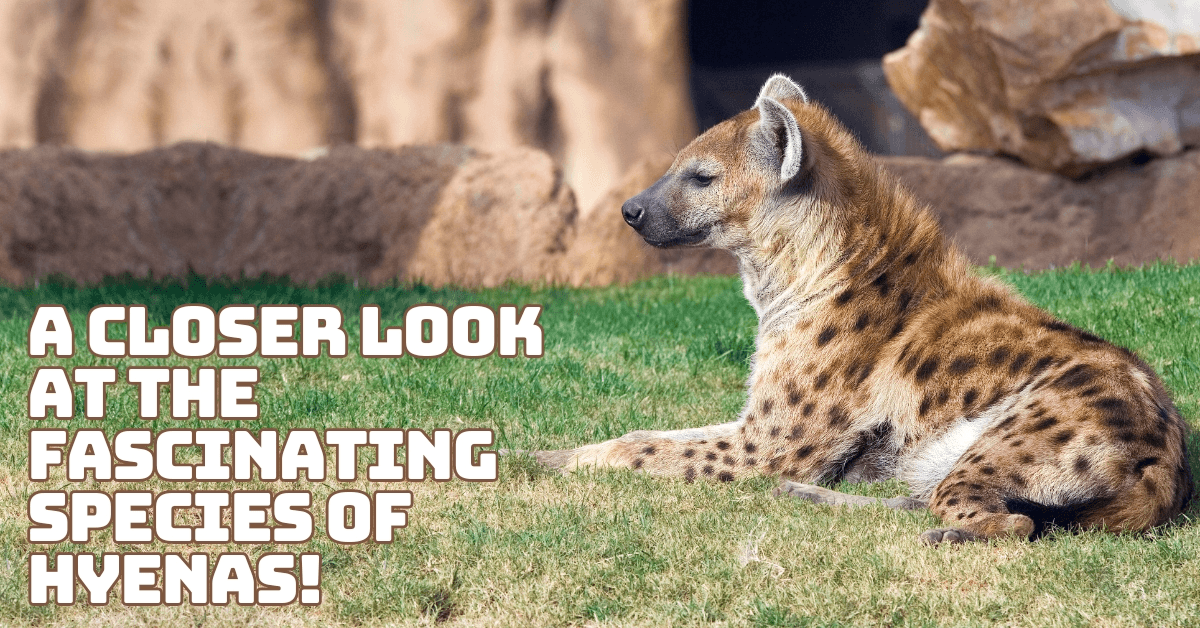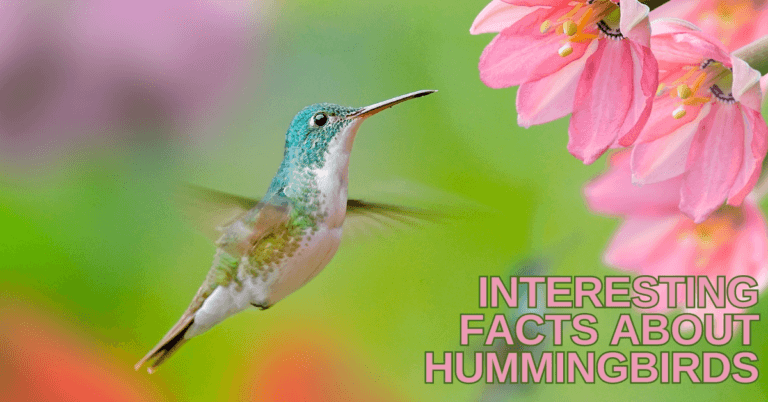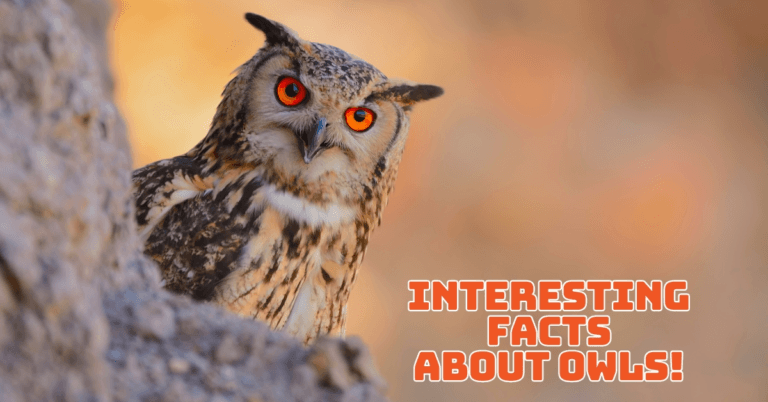Fascinating Species Of Hyenas – A Closer Look
Fascinating Species Of Hyenas – A Closer Look
Hyenas are amazing animals vital to their ecosystems despite being misunderstood and occasionally ignored.
Belonging to the Hyaenidae family, these remarkable animals are not just scavengers but also skilled hunters with complex social structures.
Despite their diverse appearances and behaviours, all hyenas share common traits such as strong jaws, keen senses, and an ability to adapt to various environments.
Their often-misrepresented reputation belies their importance in controlling prey populations and cleaning up carrion, thereby maintaining the balance within their habitats.
This article will explore each hyena species' fascinating characteristics, behaviours, and ecological significance, shedding light on these enigmatic creatures and their vital roles in the natural world.
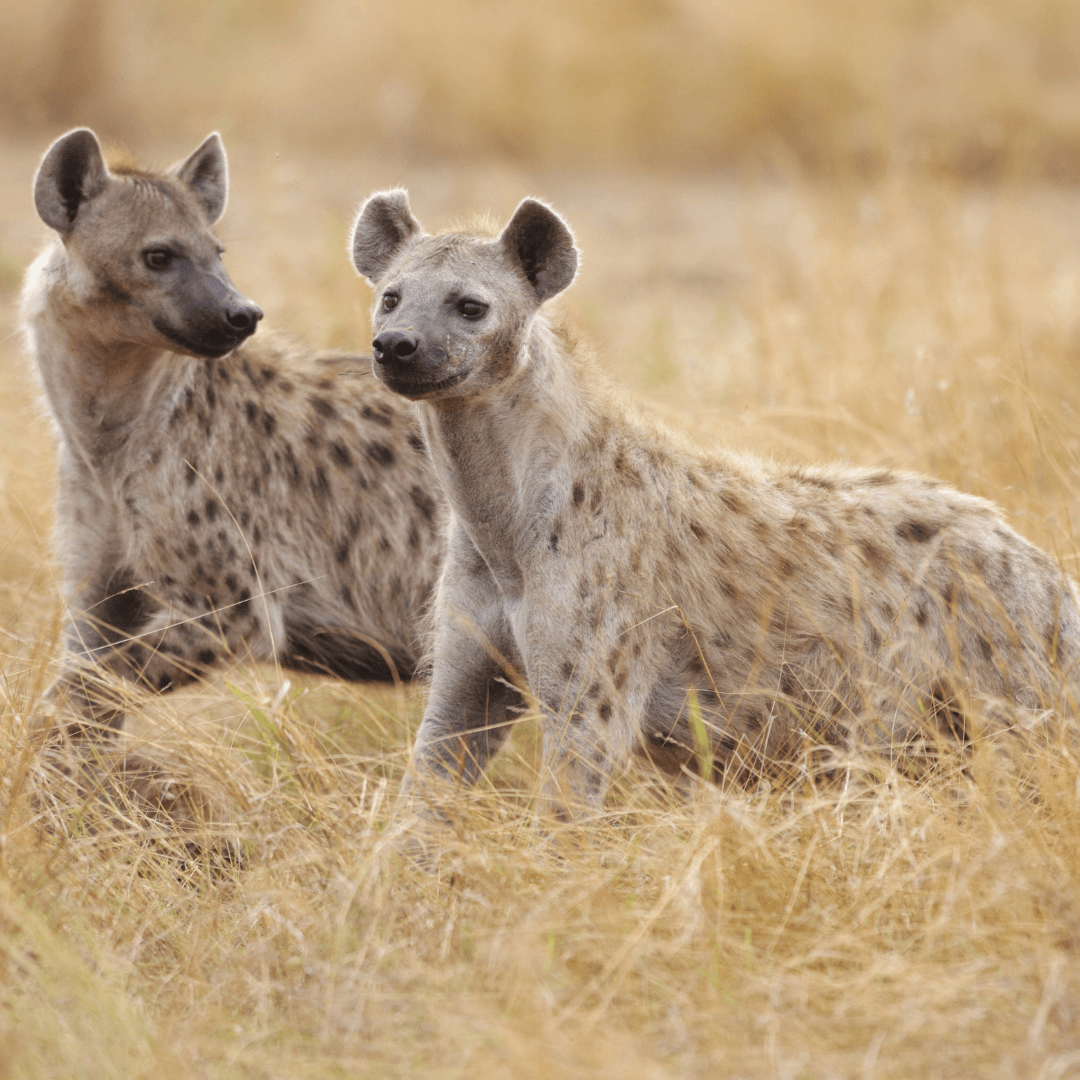
Spotted Hyena (Crocuta crocuta)
The spotted hyena (Crocuta crocuta) is the largest species known for its tan to grayish fur with dark spots.
What's truly intriguing is their larger social structure, leading to the matriarchal clans comprising up to 80 members.
Their powerful jaws and distinctive ‘laugh' are just the beginning-they are skilled hunters and scavengers with a diet that includes large ungulates, carrion, and small animals.
1. Physical Appearance Of The Spotted Hyena
The spotted hyena (Crocuta crocuta) is the largest of the hyena species, with adult males typically weighing between 89 to 121 pounds (40-55 kg), while the larger females weigh between 98 to 141 pounds (44-64 kg).
They have a body length ranging from 3.3 to 5.9 feet (1-1.8 meters) and a tail length of about 10-14 inches (25-35 cm).
Standing about 28 to 35 inches (70-90 cm) at the shoulder, these hyenas have short, coarse fur that varies in colour from light tan to reddish-brown or grayish, marked with distinct dark spots.
Robust skulls, powerful jaws, rounded ears, and high-set eyes characterize their faces. A notable feature is the pronounced sexual dimorphism; females are larger and more dominant, possessing pseudo-penises that make distinguishing between sexes challenging at first glance.
2. Behaviour And Social Structure Of The Spotted Hyena
Spotted hyenas (Crocuta crocuta) live in complex social groups called clans, consisting of up to 80 individuals.
These clans are matriarchal, with females holding the highest ranks and leading the group. Communication among clan members is highly developed, featuring vocalizations such as whoops, grunts, growls, and the iconic “laugh,” which often signifies excitement or submission.
Territorial by nature, clans defend their well-defined territories vigorously against intruders. Spotted hyenas are both proficient hunters and scavengers.
Their powerful jaws enable them to crush bones to access marrow, providing a significant advantage in nutrient-poor environments.
3. Habitat And Distribution Of The Spotted Hyena
Spotted hyenas (Crocuta crocuta) are widely distributed across sub-Saharan Africa, extending from Senegal in the west to Ethiopia and Somalia in the east and reaching as far south as South Africa.
They are highly adaptable and thrive in diverse habitats, including savannas, grasslands, woodlands, sub-deserts, and mountainous regions.
This adaptability allows them to occupy many ecological niches, though they typically avoid dense forests and extremely arid deserts.
Given their adaptability and opportunism, which will enable them to take advantage of various food sources and endure changing conditions, it is remarkable that they can be found in multiple settings.
This widespread distribution and habitat versatility contribute to their success as a species, making them one of Africa's most enduring and ecologically significant carnivores.
4. Diet Of The Spotted Hyena
Spotted hyenas (Crocuta crocuta) are opportunistic feeders with a diverse diet that includes large ungulates such as wildebeest, zebras, and antelope, which they hunt and consume.
They also scavenge carrion, capitalizing on remains left by other predators like lions and leopards. In addition to large prey, they hunt small mammals, birds, and reptiles, demonstrating their adaptability in various ecological niches.
Occasionally, their diet includes fruits, insects, and other small invertebrates. With endurance strategies to wear down their prey, spotted hyenas hunt in groups and may cover long distances at rates of up to 37 mph (60 km/h).
Despite their proficiency as hunters, they frequently scavenge, using their powerful presence to drive away other predators from carcasses.
This dietary flexibility and opportunistic behaviour contribute to their survival and ecological success across diverse environments.
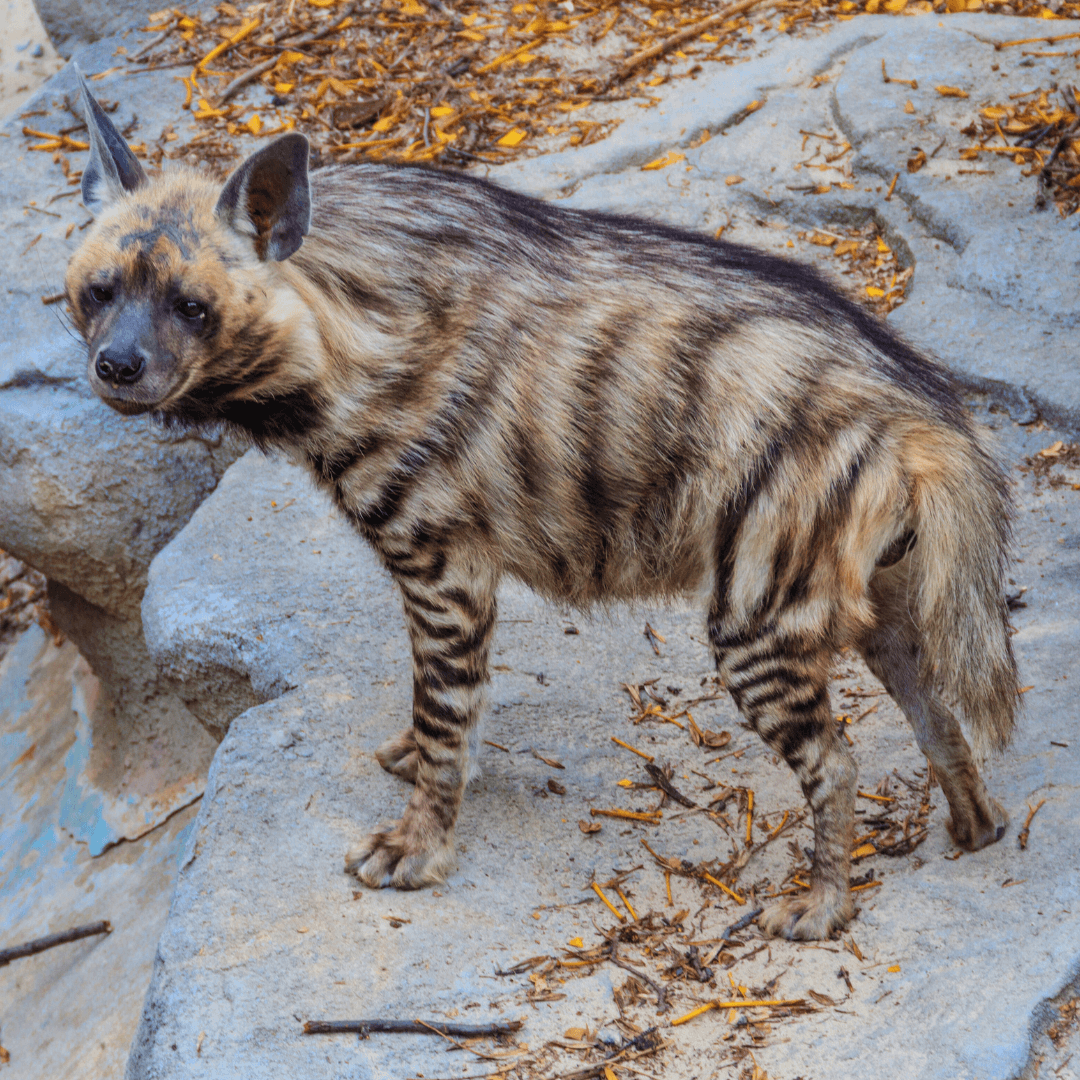
Striped Hyena (Hyaena hyaena)
The striped hyena, a fascinating yet often misunderstood species, plays a vital role in its ecosystems.
Found across North and East Africa, the Middle East, and the Indian subcontinent, this nocturnal scavenger is known for its distinctive appearance and solitary behaviour.
Despite being classified as “Near Threatened” due to habitat degradation, hunting for traditional medicine, and persecution, the striped hyena remains a resilient and adaptable species.
1. Physical Appearance Of The Striped Hyena
The striped hyena is medium-sized, with a body length ranging from 1 to 1.2 meters and a height at the shoulder of about 65-80 cm.
It has a distinctive coat featuring vertical black stripes on a grayish or sandy-coloured background.
Its mane, which runs from the neck to the back, can be erected to make the hyena appear larger when threatened.
The ears are large and pointed, and it has a bushy tail. The striped hyena's powerful forelimbs and relatively weaker hind limbs give it a characteristic hunched appearance.
2. Behaviour And Social Structure Of The Striped Hyena
Striped hyenas are primarily nocturnal, emerging from their dens at dusk to forage. They are generally solitary or form small family groups, unlike the large clans of the spotted hyena.
Communication among striped hyenas includes a variety of vocalizations, scent markings, and body postures.
They use anal gland secretions to mark their territory and establish social bonds. While they may sometimes scavenge together, their social interactions are less complex and frequent than those of spotted hyenas.
3. Habitat And Distribution Of The Striped Hyena
The striped hyena inhabits a variety of landscapes, including savannas, semi-deserts, scrub forests, and rocky terrains.
They are adaptable and can live in areas close to human settlements, often venturing into villages at night to scavenge.
Amazingly, they can be found in such a wide range of environments, considering their opportunism and flexibility, which enable them to take advantage of different food sources and withstand shifting weather.
4. Diet Of The Striped Hyena
Striped hyenas are opportunistic feeders with a highly varied diet. They primarily scavenge on carrion, using their strong jaws to crush bones and access marrow.
They also consume small mammals, birds, fruits, and insects. In areas with human presence, they may feed on garbage and livestock carcasses.
Their ability to digest various food sources, including plant material and tough animal parts, allows them to thrive in diverse environments.
With its unique adaptations and ecological role, the striped hyena is a remarkable species deserving of greater attention and conservation efforts.
By understanding its behaviour, habitat, and challenges, we can better appreciate the importance of this enigmatic animal in maintaining ecological balance.

Brown Hyena (Parahyaena brunnea)
The brown hyena, also known as the strandwolf, is an intriguing and elusive species native to the arid regions of southern Africa.
This hyena species is well-adapted to survive in some of the continent's harshest environments, including deserts and coastal areas.
1. Physical Appearance Of The Brown Hyena
The brown hyena is easily recognizable by its long, shaggy coat, predominantly dark brown or black, with lighter-coloured legs and a bushy tail.
It has a distinctive mane of longer hair running from the top of its head down its back, which it can erect when threatened to appear larger.
Adults typically measure between 1.3 to 1.6 meters in length, including the tail, and stand about 70-80 cm tall at the shoulder.
They have powerful jaws and strong teeth adapted for breaking bones, and their forelimbs are slightly longer than their hind limbs, giving them a characteristic sloping back.
2. Behaviour And Social Structure Of The Brown Hyena
Brown hyenas are primarily nocturnal, foraging alone or in small groups at night. They live in clans ranging from four to fifteen individuals, typically composed of related females, their offspring, and a few males.
Unlike spotted hyenas' highly structured social systems, brown hyena clans are less cohesive, with members often foraging alone.
However, they still maintain strong social bonds and will defend their territory collectively. Communication is facilitated through various vocalizations, scent markings, and visual displays.
3. Habitat And Distribution Of The Brown Hyena
The brown hyena inhabits southern Africa's dry, arid regions, including the Namib Desert, the Kalahari Desert, and various coastal areas.
They prefer open, sparsely vegetated landscapes but can also be found in scrublands and rocky terrain.
Their range includes Namibia, Botswana, Zimbabwe, and South Africa. Brown hyenas are highly adaptable and can travel long distances searching for food, often venturing close to human settlements.
4. Diet Of The Brown Hyena
As scavengers, brown hyenas primarily feed on carcasses left by other predators. They have a highly developed sense of smell, which they use to locate dead animals over vast distances.
In addition to carrion, they will consume small mammals, birds, insects, and plant material such as fruits and roots.
Thanks to their powerful jaws and teeth, they can smash bones to get at the nutrient-rich marrow inside; in coastal areas, brown hyenas are known to feed on marine resources, including fish, seals, and even stranded whales.
The brown hyena's remarkable adaptability and crucial role as a scavenger highlight its importance in maintaining the health and balance of its ecosystem.
Understanding the brown hyena's behaviour, habitat, and diet is essential for its conservation and protection of the unique ecosystems it inhabits.
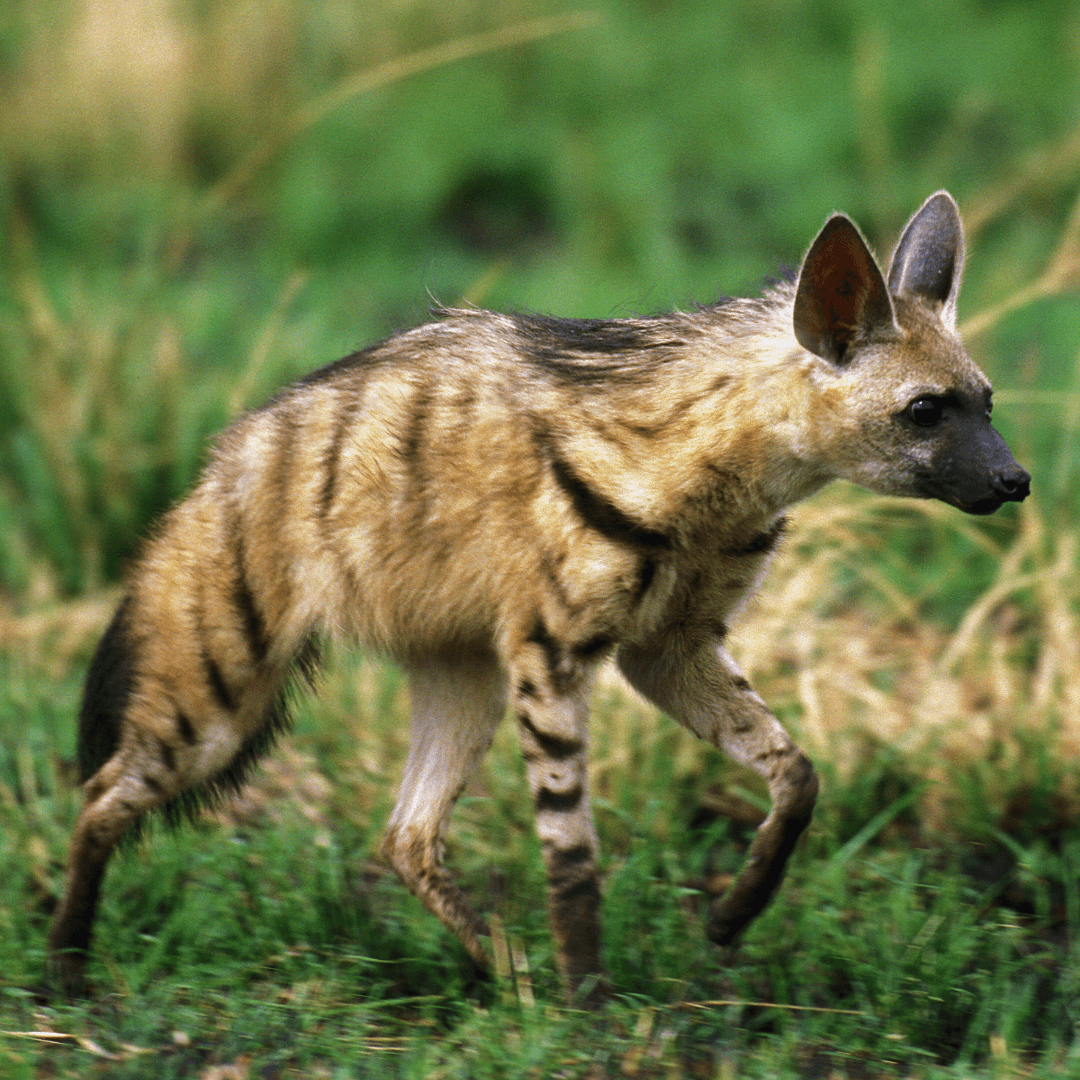
Aardwolf (Proteles cristata)
The aardwolf is a unique and fascinating member of the hyena family native to the diverse landscapes of Eastern and Southern Africa.
Unlike its larger and more robust relatives, the aardwolf has evolved a specialized diet centred around termites, making it distinct among hyenas.
Despite its diminutive size and less aggressive nature, the aardwolf plays a crucial ecological role in its habitat.
1. Physical Appearance Of The Aardwolf
The aardwolf is the smallest of the hyena species, with a slender build and a height ranging from 50 to 60 centimetres at the shoulder.
It has a pale yellow to reddish-brown coat with vertical black stripes running down its body, reminiscent of those of a tiger.
The fur is short and sleek, and the ears are large and pointed. A distinctive feature of the aardwolf is its long, sticky tongue, which it uses to lap up termites from their mounds.
Despite its appearance, the aardwolf possesses sharp teeth and powerful jaws adapted for cracking open termite nests.
2. Behaviour And Social Structure Of The Aardwolf
Aardwolves are primarily nocturnal and solitary animals, although they may occasionally be seen foraging in pairs or small family groups.
They are generally shy and non-aggressive, preferring to avoid confrontations with larger predators.
Aardwolves communicate through various vocalizations, including soft growls and whimpers, as well as through scent markings.
While they may establish temporary territories, they are not territorial in the same way as other hyena species.
3. Habitat And Distribution Of The Aardwolf
The aardwolf inhabits various habitats, including grasslands, savannas, and scrublands, with well-drained soils suitable for termite colonies.
It is found in Eastern and Southern Africa, including South Africa, Namibia, Botswana, and Zimbabwe.
Aardwolves typically avoid dense forests and arid deserts, preferring open landscapes with abundant termite mounds foraging.
4. Diet Of The Aardwolf
Unlike other hyenas, which are primarily carnivorous, the aardwolf has a specialized diet consisting almost exclusively of termites.
It finds termite mounds with the help of its excellent sense of smell, and then it uses its long, sticky tongue to remove the termites from their nests.
A single aardwolf can consume thousands of termites in a single night, making them essential for controlling termite populations in their habitat.
In addition to termites, aardwolves may occasionally supplement their diet with other insects, fruits, and small vertebrates.
The aardwolf's unique adaptations and specialized diet highlight its importance as a specialized predator in its ecosystem.
Understanding the aardwolf's behaviour, habitat, and dietary preferences is essential for its conservation and preserving the delicate balance of its ecosystem.
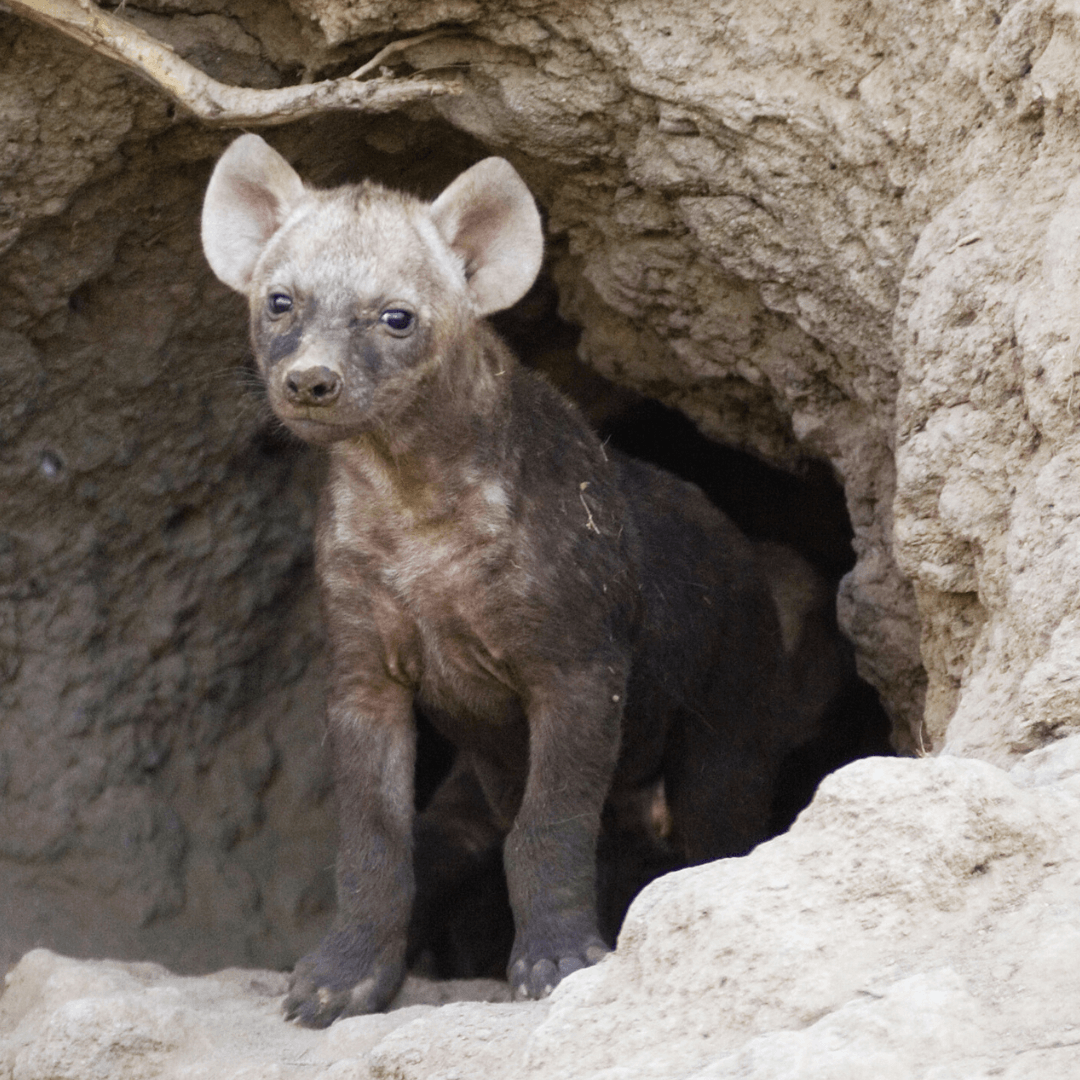
Cave Hyena (Crocuta crocuta spelaea)
The cave hyena, a fascinating subspecies of the spotted hyena, roamed Europe and Asia during the Pleistocene epoch.
Known for its adaptations to cold climates, the cave hyena played a significant role in prehistoric ecosystems and has been immortalized in cave art by early humans.
1. Physical Appearance Of The Cave Hyena
The cave hyena was similar in appearance to its modern relative, the spotted hyena, but was generally larger and more robust.
It had a powerful build, strong limbs and a muscular body adapted for endurance and cold weather.
Its fur was likely denser and longer than modern hyenas, providing insulation against the frigid climates of the Ice Age.
The coat's coloration is believed to have been similar, with a spotted pattern that helped with camouflage in the varied environments it inhabited.
2. Behaviour And Social Structure Of The Cave Hyena
Like modern spotted hyenas, cave hyenas likely lived in social groups or clans, which provided advantages in hunting and scavenging.
They exhibited complex social behaviours, including vocalizations, scent marking, and coordinated hunting strategies.
Cave hyenas were apex predators and scavengers, and their social structure would have included a clear hierarchy dominated by females, similar to the social dynamics of modern hyenas.
Evidence from cave sites suggests they had communal dens where they raised their young and stored food.
3. Habitat And Distribution Of The Cave Hyena
Cave hyenas inhabited various European and Asian environments, including open grasslands, steppes, and forest peripheries.
They were highly adaptable and could thrive in cold, glacial, temperate regions. Fossil evidence indicates their presence from Western Europe to Eastern Asia, showing they were widespread during the Pleistocene epoch.
Their remains have been found in numerous cave sites, which they used as shelters and breeding grounds.
4. Diet Of The Cave Hyena
Cave hyenas were opportunistic feeders with a diverse diet, including large herbivores such as mammoths, woolly rhinoceroses, horses, and bison.
They were both active hunters and scavengers, capable of taking down large prey with their powerful jaws and cooperative hunting tactics.
Their robust teeth and strong digestive systems allowed them to consume and process bones, making the most of the carcasses they encountered.
The abundance of large prey during the Pleistocene provided ample food resources for these formidable predators.
The cave hyena's adaptations to its environment, social behaviour, and dietary habits highlight its significant role in prehistoric ecosystems.
As a dominant predator of the Pleistocene, the cave hyena shaped the dynamics of the animal communities it inhabited and left a lasting legacy in the form of fossil remains and ancient art.
Understanding the cave hyena provides valuable insights into the life of Ice Age megafauna and the evolutionary history of hyenas.

Short-Faced Hyena (Chasmaporthetes spp.)
The short-faced hyena, an extinct genus known as Chasmaporthetes, represents a unique branch of the hyena family that thrived across North America, Europe, Asia, and Africa.
Unlike their modern relatives, these hyenas were built for speed and resembled cheetahs more closely, highlighting their specialization as fast-running predators.
1. Physical Appearance Of The Short-Faced Hyena
Short-faced hyenas were distinguished by their elongated limbs and slender bodies, adaptations that facilitated high-speed pursuits.
They had shorter snouts than modern hyenas, giving them a distinctive “short-faced” appearance. This genus exhibited a more gracile and aerodynamic body structure, which, combined with their long legs, made them adept runners.
Their overall morphology was more similar to modern cheetahs, with adaptations for endurance and speed rather than the robust, bone-crushing build of contemporary hyenas.
2. Behaviour And Social Structure Of The Short-Faced Hyenas
While specific details about their social structure remain speculative, short-faced hyenas likely exhibited behaviours similar to modern hyenas and other cursorial (running) predators.
They may have hunted in small groups or pairs, coordinating their efforts to chase and capture prey.
Social interactions included vocalizations, scent marking, and cooperative breeding, akin to the social dynamics of other hyena species and pack-hunting canids.
3. Habitat And Distribution Of The Short-Faced Hyena
Short-faced hyenas were highly adaptable and occupied various habitats across their extensive range.
They lived in open grasslands, savannas, and light woodlands, which favoured their running abilities.
Fossil evidence indicates their presence from North America and Europe to Asia and Africa, showcasing their widespread distribution during the Pliocene and Pleistocene epochs.
Their adaptability to different climates and terrains was a key factor in their success across multiple continents.
4. Diet Of The Short-Faced Hyena
As active predators, short-faced hyenas primarily hunted medium to large-sized herbivores. Their long limbs and speed allowed them to chase down swift prey, such as antelopes and other ungulates.
In addition to hunting, they likely scavenged opportunistically, consuming carrion when available. While not as robust as bone-crushing hyenas, their teeth and jaw structure were still well-suited for slicing flesh and consuming a carnivorous diet.
This combination of hunting and scavenging would have maximized their dietary opportunities in diverse environments.
The short-faced hyena's adaptations for running and its widespread distribution highlight its unique niche in the prehistoric ecosystems it inhabited.
By understanding the physical characteristics, behaviour, and diet of Chasmaporthetes, we gain valuable insights into the evolutionary diversity of hyenas and the ecological roles they play across continents.
These extinct predators exemplify the varied evolutionary paths within the Hyaenidae family, showcasing the adaptability and specialization that allowed them to thrive in different environments.
Conclusion
In conclusion, Hyenas are a diverse and fascinating family of carnivores adapted to various environments and ecological niches.
Even with many obstacles, such as habitat loss and conflict between humans and wildlife, hyenas play a crucial role in maintaining their ecosystems by recycling nutrients and managing prey populations.
Conservation initiatives are important for these amazing species to be protected and ensured to survive.
Hyenas play an important part in the natural world, and we must protect their habitats and populations due to our growing appreciation for their diversity and ecological significance.
I trust you enjoyed this article on A Closer Look At The Fascinating Species Of Hyenas. Please stay tuned for more blog posts soon. Take care!
JeannetteZ
>>>Please click here to read my all-inclusive article about Why Is Wildlife Important And How Can We Protect It<<<
Your Opinion Is Important To Me
Do you have thoughts, ideas, or questions? I would love to hear from you. Please leave me your questions, experiences, and remarks about this article, A Closer Look At The Fascinating Species Of Hyenas, in the comments section below. You can also email me at Jeannette@Close-To-Nature.org.
Disclosure
This post may contain affiliate links. As an Amazon Associate and other affiliate programs, I earn from qualifying purchases at no extra cost to you. Please read my full affiliate disclosure.
You might also enjoy these blog posts:
How To Create A Healing Garden
How To Prepare Soil For Planting Herbs
Hummingbirds Of Costa Rica: A Comprehensive Guide

